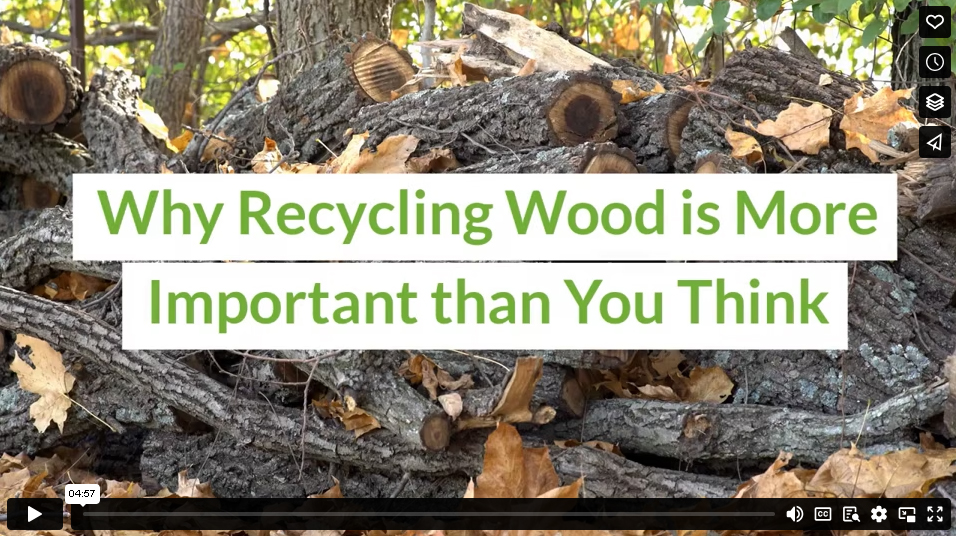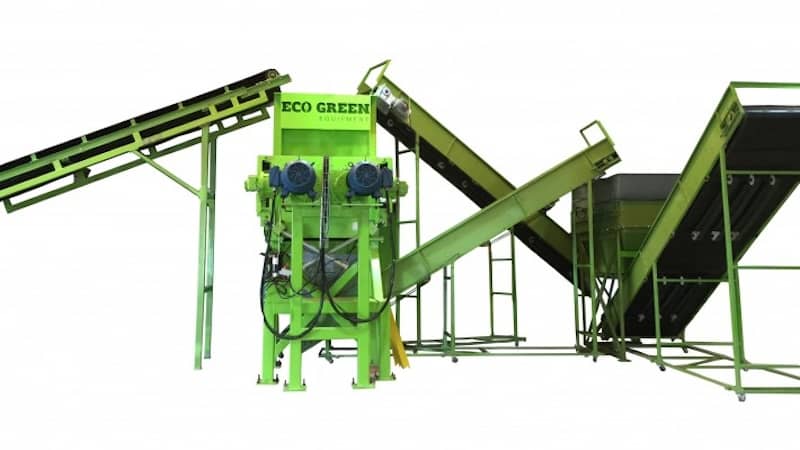It’s hard to set a monetary value on natural resources. Walking through a forest with towering trees and creeping understory plants gives us many physiological benefits and countless ecosystem resources, like fresh water, medicinal plants, and wood. However, we only get the wood if we cut the forest down. The process of deforestation is a salient issue across the world. As our society continues to consume vast amounts of timber for construction, furniture, and paper, recycling wood becomes more and more critical.
The Concept of Wood Recycling
We are familiar with recycling metal, glass, and plastic. Often, we don’t consider the potential to recycle wood. Maybe this is because wood makes such good fuel when burnt. Extending the life of wood before it is burnt will help us navigate the global threats of climate change and topsoil erosion.
The Process of Recycling Wood
Like all recycling, wood recycling involves several steps designed to transform discarded timber into reusable material. The process starts with the collection of wood waste, which can come from construction sites, demolition projects, and old furniture. Once collected, the wood is sorted to remove contaminants like nails and screws. These contaminants can also be recycled at other facilities.
The next step involves shredding the wood into smaller, more manageable pieces. This is where machinery like wood grinders, also known as wood shredders, comes into play. Wood grinders reduce large pieces of wood into chips or sawdust. These machines are essential for efficiently managing large volumes of wood waste.
After grinding, the wood needs to be dried to remove excess moisture. Dryer recycling machines dehydrate the processed wood to ensure it won’t rot. Proper drying is crucial as it affects the quality and usability of recycled wood products. In some ways, recycled wood is more valuable than fresh timber because it goes through this drying process.
What Can Recycled Wood Be Made Into?
As any carpenter knows, wood is incredibly versatile and the recycled version is no different. Some are pretty simple, while others are extremely complex. Some common uses include:
- Mulch and Compost: Wood chips can be used as mulch in gardens and landscaping projects, providing plant insulation and moisture retention. Consumers can put them in compost to enrich the soil.
- Animal Bedding: Sawdust and wood shavings are often used as bedding for livestock and pets, providing a comfortable and absorbent material.
- Engineered Wood Products: Recycled wood can be used to create particleboard, fiberboard, and similar products. These materials are widely used in construction and furniture making.
- Paper and Pulp Products: Wood fibers can be recycled into paper and cardboard through further processing.
- Furniture and Crafts: Reclaimed wood is popular in the creation of rustic and sustainable furniture and various craft projects. Some types of wood, like Kauri from New Zealand, are no longer allowed to be felled, making used lumber in high demand.
Starting a Wood Recycling Business
Starting a wood recycling business is easier than it might sound. Here are the basic steps to a successful wood recycling venture.
- Invest in the Equipment: Invest in essential machinery, such as wood shredders, conveyor belts, and dryer recycling machines, to process and prepare the wood for reuse.
- Obtain Permits and Licenses: Complying with local regulations sounds tricky, but most of the time, it’s just a simple application and annual checkups.
- Set Up the Facility: Choose an accessible location for collecting wood waste and distributing recycled products. Wood can be cumbersome; make sure you have enough space.
- Hiring and Training Staff: Hire workers and provide training on wood recycling processes and machinery operation. You’re the boss.
Why Recycle Wood?
Of all raw materials, recycling wood may be the most important. Some of the arguments behind recycling wood are:
To Look After the Planet: Forests are vital to our health and the planet’s. They act as a carbon sink and maintain a vast diversity of plants and animals. Recycling wood reduces the demand for logging, which preserves wild forests and slows climate change.
To Reduce Garbage: Wood waste makes up a solid chunk of what gets thrown in the landfill. Recycling wood diverts it from landfills, reducing the strain on waste management systems and minimizing landfill-related pollution.
To Save Energy: Processing recycled wood generally consumes less energy than extracting virgin timber. This energy efficiency reduces greenhouse gas emissions and conserves resources.
To Make a Profit: Recycling wood creates job opportunities in collecting, processing, and manufacturing recycled products. As new markets for eco-friendly products grow, the wood recycling industry offers countless business opportunities.
In the end, wood recycling is not like other recycling methods that seem wholly focused on managing waste. Recycling wood is about valuing our forests and creating a sustainable future. By recycling wood, we reduce the demand for virgin timber, conserve natural resources, and minimize environmental impact. Like a forest’s interconnected system of roots, recycling wood has far reaching impacts for everyone. It’s more important than you think.
Video





